Inside 140-year-old museum during mammoth renovations
 Shaun Whitmore/BBC
Shaun Whitmore/BBCExclusive images have given an insight into a mammoth project to renovate a 140-year-old museum that has been closed for two years.
Ipswich Museum shut its doors in October 2022 for a £11.4m revamp.
Work has been progressing with an expected opening of late 2025 or early 2026.
The BBC has taken a look inside the High Street building to see how work is progressing ahead of the opening in just over a year's time.
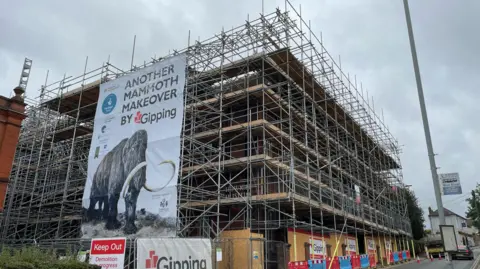 Shaun Whitmore/BBC
Shaun Whitmore/BBCThe museum, which is owned by Ipswich Borough Council, was in need of the renovation.
Dating back to 1881, every gallery in the museum will upgraded.
Alison Hall, museum manager, said there was already a "world of difference" since the work began.
"This would usually be full of all manner of taxidermy wildlife, exploring the local landscape as well as some creatures that come from different continents," she said while standing in the central Victorian natural history gallery.
"At the moment it's very much a work in progress. There's a lot of work going on around us.
"This is so exciting. This project has been a really long time coming."
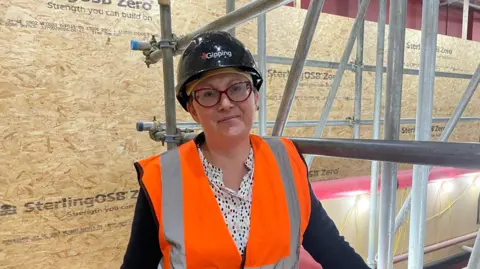 Shaun Whitmore/BBC
Shaun Whitmore/BBC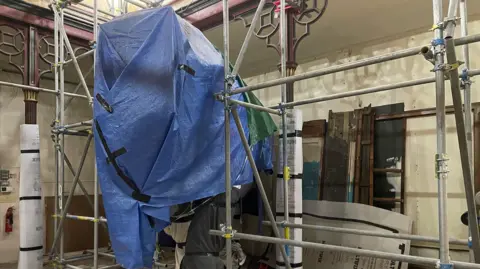 Shaun Whitmore/BBC
Shaun Whitmore/BBCMs Hall explained a huge part of the process at the start had been to remove the artefacts.
The museum's total collection is made up of about 200,000 items.
While not everything is on display, the museum team still had several thousand items they needed to remove.
"There's a few things that needed to stay in situ because they're a little bit too big to move," Ms Hall continued.
"We've had tiny things that will go in a small box all the way through to incredibly heavy Egyptian sculptures that needed specialist removal companies.
"So it's been a massive task.
"Even before we started the task of the decant, we spent many months auditing the collection so we knew exactly what was on display, where it was and planned where everything was going to get stored."
 Shaun Whitmore/BBC
Shaun Whitmore/BBC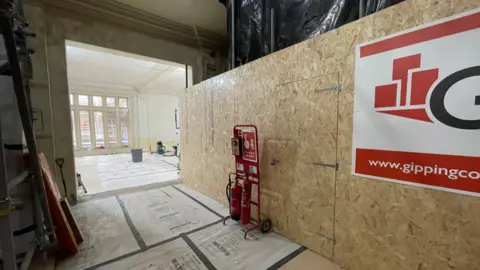 Shaun Whitmore/BBC
Shaun Whitmore/BBCBeloved items like a stuffed mammoth, known as Wool-I-Am, have remained in the building and covered to avoid damage.
The replica mammoth was created in the 1980s to complement the displays of actual remains found in the Ipswich area.
The species is believed to have lived in the area until 11,500 years ago.
Many of the historic items needed bespoke packaging while teams needed to exercise extreme care.
Once the building work is complete the team will then need to bring the items back which Ms Hall said would be a "huge amount of work".
"It's an incredibly exciting project and it's hopefully going to make a museum that everyone will love for generations to come," she added.
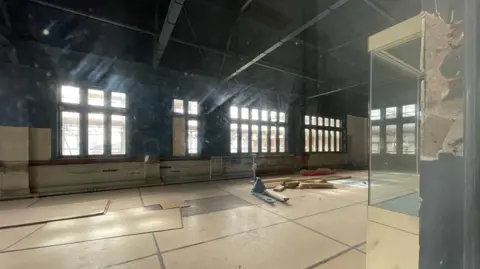 Shaun Whitmore/BBC
Shaun Whitmore/BBCThe cost of the project has been a large talking point over the years.
Initially it was expected the work would cost £8.7m with the National Lottery Heritage Fund providing about half of this.
Earlier this year it was revealed the costs had run £2.7m over budget which the council said was due to inflation and supply chain disruptions.
However further lottery funding as well as council money was used to cover the increased costs.
 Shaun Whitmore/BBC
Shaun Whitmore/BBC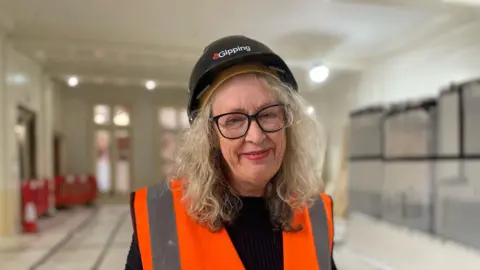 Shaun Whitmore/BBC
Shaun Whitmore/BBCThere remained some uncertainty over the reopening date.
Labour councillor and portfolio holder for planning and museums, Carole Jones, said she was hopeful the museum would reopen at the end of 2025 or the start of 2026.
"It might go over into the beginning of 2026 because obviously we want to do this properly, we don't want to cut corners to meet a deadline because this is a really precious important building," she explained.
"This is a once in a generation event.
"It is an enormous project for Ipswich, for this wonderful historic museum, and when it's ready people will love it."
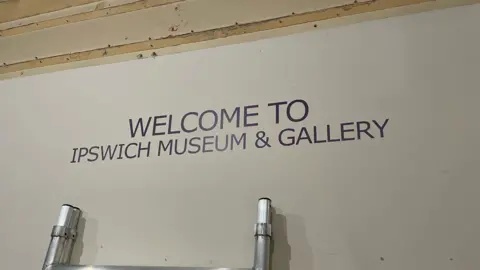 Shaun Whitmore/BBC
Shaun Whitmore/BBC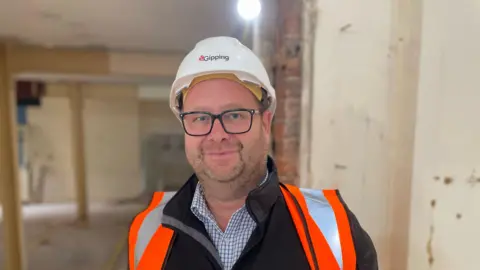 Shaun Whitmore/BBC
Shaun Whitmore/BBCGipping Construction, based in Ipswich, was awarded the project work which contracts manager, Steve Offord, described as an "honour".
"We have done museums before but this is a very unique building," he said.
"It is an honour to work on this one. It's a big building and a big project for the council.
"We're locally based, so it is an honour to work with the council yet again and do a prestigious building for them."
 Shaun Whitmore/BBC
Shaun Whitmore/BBC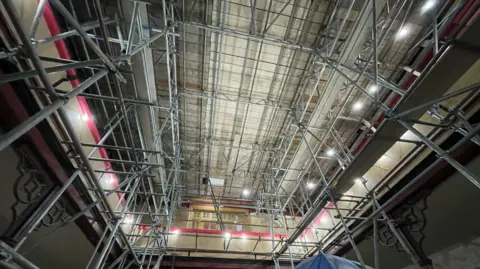 Shaun Whitmore/BBC
Shaun Whitmore/BBCHe explained the majority of the work had run smoothly, with the odd hiccup due to the building's age.
"As always, as you take things apart there's always things you uncover that no-one expects and with the design team we work together to solve it," he added.
The museum will see a vast number of upgrades, from its electricity to its heating, to make it "more comfortable and modern", according to Mr Offord.
There will also be a new cafe, terrace and new toilets.
"We're giving [the museum] a good makeover," he continued.
"It was a bit tired and needed a good change... a good freshen up."
The whole team were positive once completed, the work would help encourage young generations of the future to come and learn about the past in an historic venue.
Follow Suffolk news on BBC Sounds, Facebook, Instagram and X.
